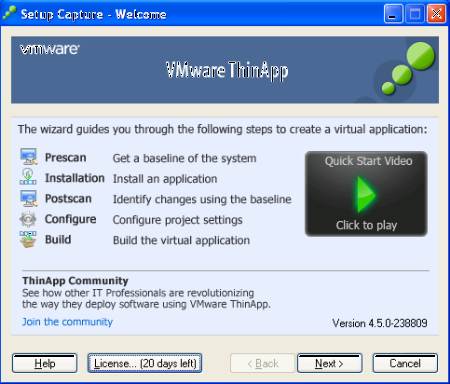


but we want the add-in to be made available from the original Excel shortcut residing on the baseline image and the shortcut on the standard start menu.Īnd you also need to keep the Excel process that are in the virtual bubble alive, if you want that Excel also loads the add-in from the normal shortcut. You need to start local Excel from Thinapp entrypoint to start it into the virtual bubble so that it can "see" the add-in. I then got a entrypoint to the locally installed excel.exe and when I start it from a virtualized session it loads the add-in. I also added these entries into package.ini:ĬhildProcessEnvironmentExceptions=EXCEL.EXE I placed the shortcut under start-menu\programs and named it "Excel 2013 Applicationname". This was done my creating a shortcut to Excel during pre-scan and local installation. So I have managed to execute Excel 2013 that configures add-in from a Thinapp virtual bubble. We do not want to add the whole Office suite to the Thinapp virtual package and not add the add-ins trough GPO,SCCM etc. I would really appreciate if somebody could tell me how to add Office add-ins from inside a Thinapp virtual application/package to a locally installed MS Office 2013 suite on a Windows "base" image? Remember that the application needs to registered every times the user logon, because we use a non-persistent View pool. The best thing would be if the add-ins were added in the logon process together with thinreg.exe, but if that is not supported, the add-ins must be added to Office either in a custom Office shortcut/entry point or after starting the Thinapp virtual application. I have also read that you could make entrypoints to the locally installed Office 2013, but I get errors on the build process. ChildProcessEnvironmentExceptions=excel.exe outlook.exe powerpnt.exe winword.exe.ChildProcessEnvironmentDefault=External.ChildProcessEnvironmentExceptions=WINWORD.EXE EXCEL.EXE POWERPNT.EXE OUTLOOK.EXE.I have tried several changes in the package.ini and virtual filesystem attributes(no registry changes yet): The problem is that the add-ins is not added to Office 2013 before or after the Thinapp is started on a test client.

We tested that the Add-ins was opened inside Outlook, Word and Powerpoint before post installation scan. We have a 3rd party application with a couple Thinapp entrypoints(exe files) and in the Thinapp package process we also installed Office addins.



 0 kommentar(er)
0 kommentar(er)
